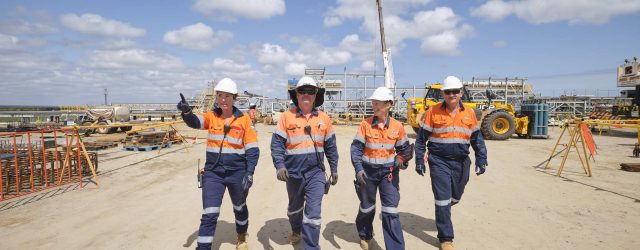Locking in – who wins?
Posted: 14th June 2022
Posted in: Blog

Posted: 14th June 2022
Posted in: Blog
Construction contractors are often expected to lock in upfront a lump sum price to construct major and complex works that will take years to complete. But, when a contractor locks in a price and takes on all the risk, does the client really benefit?
In this blog we examine the concept and consequences of ‘price certainty’ and the need for solutions to address the steep and unpredictable change in pricing of key commodities in construction.
Locking in – who wins?
Construction contractors are often expected to lock in a lump sum price, during a competitive tender process, to construct major and complex works that will take years to complete. Governments and developers see this as providing price certainty.
Yet, when a contractor locks in a price and takes on all the risk, does the client really get price certainty and does the wider community benefit?
We have recently seen significant cost increases in construction materials such as steel, timber and concrete, combined with impacts from the increasing oil and labour prices. It is not always easy to predict which commodity will be next.
A contractor who prices a lump sum contract with no price adjustments for unpredicted changes, risks not only no profit on the job, but also having to dip into its own pocket to complete an asset the client will own.
The contractor in this scenario becomes incentivised to try and find ways to recoup its losses through contractual claims, tying up valuable resources in claims management—not to mention the legal fees. The contractor becomes even more focused on finding ways to save costs, which under a lump sum contract may not result in the best outcome for the client.
As we’ve seen with recent industry insolvencies, if a contractor cannot mitigate its losses and collapses, the cost to the client will be significant as it will need to engage other contractors to finish the project, and this will also cause extensive delay to the completion date. Is the risk worth it for either the owner or the contractor? The practice of locking in lump sums for major projects that take years to complete, without adequate provision for adjustment of prices in circumstances outside the control of the contractor, needs to stop as it benefits nobody.
ACA believes projects can continue to be constructed however mechanisms to address escalation are required, including value engineering as well as contractual price adjustment mechanisms.
Contractual arrangements where the contractor risks its profit and/or overheads but not a loss (for example, target cost contracts) are not the solution to significant escalation. While collaborative forms of contract are viewed as far better for both parties, without a price adjustment mechanism this is still an unfair outcome for a diligent contractor who cannot control global markets.
Contractual price adjustment, known in this context as a ‘rise and fall’ provision, provides for the contract price to be adjusted (up or down) when labour or material costs substantially change. Provisional sums or prime cost items may also be relevant for specified materials or work that cannot be priced with certainty at the time of tender. These price adjustments can be on an open book approach, or an objective price index, provided there is a suitable index updated with sufficient frequency to be of use.
The Australian Constructors Association calls for government and private sector clients alike to review their contracts and include a price adjustment mechanism for price changes outside the control of the contractor. Ideally, this would be undertaken in combination with collaborative contracting arrangements and value engineering.
We are seeing some good examples of price adjustment provisions in infrastructure contracts such as the price adjustment mechanisms now included in Queensland’s Transport Infrastructure Contract (Construct Only) and the (optional) rise and fall mechanism available in the NSW GC21 contract.
Contract price adjustments can work to protect the client as much as the contractor. For example, a lump sum contract priced now will be based on high oil prices. Should prices fall during the contract period, the client will benefit from an adjusted contract price.
Forcing contractors to take on pricing risks outside their control leads to claims, disputes and unfair consequences. This is yet another barrier to productivity in an industry that is facing a major workforce shortage. This is not good for the industry, its workers, or the community.
Relevant information: A survey undertaken by the Australian Constructors Association in partnership with Arcadis in mid 2022 found the construction industry’s woes are far from over with key materials pricing and availability stress with tendering conditions heating up across Queensland, Victoria, New South Wales and Western Australia. View the survey findings.